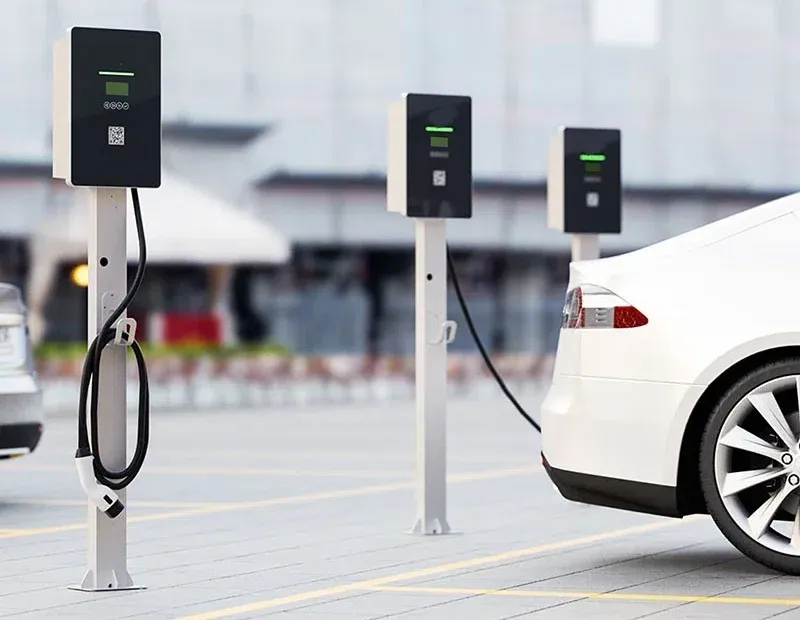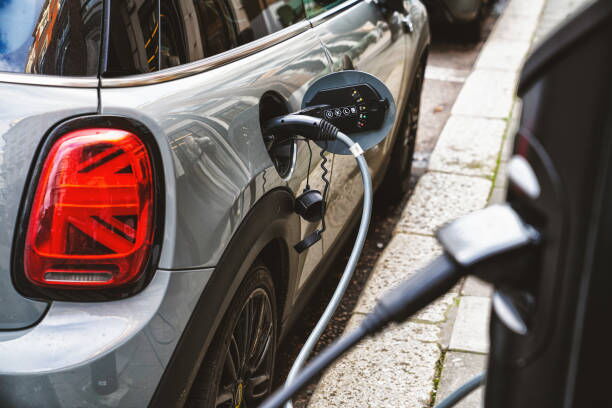As electric vehicles (EVs) continue to gain traction globally, understanding the different types of EV charging stations is essential for both current and prospective EV owners. Efficient charging infrastructure plays a crucial role in the overall EV ownership experience—impacting convenience, travel planning, charging costs, and even battery lifespan.
Whether you're charging at home, at your workplace, or at a public location, each type of EV charger serves a unique purpose and caters to specific driving behaviors. In this article, we break down the main types of EV charging stations—Level 1, Level 2, and Level 3—and discuss where they are typically found, how they work, and which use cases they’re best suited for.
One of the biggest advantages of owning an electric vehicle is the ability to recharge it at home. Home EV charging provides unmatched convenience, allowing EV owners to start each day with a full battery without making special trips to a fueling station.
Level 1 charging is the simplest and most accessible form of EV charging. It uses a standard 120-volt AC household outlet, the same type used for most domestic appliances. This method typically does not require any additional equipment—simply plug your EV into the wall with the cable provided by the manufacturer.
Charging Speed: Level 1 charging delivers around 2 to 5 miles of range per hour.
Full Charge Time: It can take between 22 and 50 hours to fully charge a battery electric vehicle (BEV) from empty, depending on the battery size.
Ideal Use Case: Suitable for overnight charging or for EV owners with short daily commutes. It's also a practical backup charging solution when other options aren't available.
Despite its slow speed, Level 1 charging is still useful, especially for plug-in hybrid vehicles (PHEVs) that have smaller battery capacities.
Level 2 chargers are a major step up in terms of power and speed. These chargers operate on a 240-volt circuit, similar to what powers your home's oven or clothes dryer. Most EV owners install Level 2 chargers at home for daily charging needs.
Charging Speed: Typically offers 10 to 30 miles of range per hour.
Full Charge Time: Charges most BEVs to 80% in 4 to 10 hours.
Installation Requirements: Requires professional installation by a licensed electrician and may need upgrades to your home’s electrical panel.
Ideal Use Case: Perfect for overnight charging at home or high-mileage drivers who need quicker turnarounds.
Many EV charger manufacturers offer smart features such as mobile app integration, scheduled charging, energy monitoring, and load balancing for Level 2 units, making them a smart investment for long-term EV use.
Workplace charging stations provide an excellent opportunity for employees to recharge their EVs while they work. Increasingly, businesses are installing EV chargers in office parking lots to support sustainability goals, reduce employee commuting stress, and enhance benefits packages.

Common Types: Most workplace charging stations are Level 1 or Level 2.
Benefits:
Convenient for daily top-ups
Reduces home energy use
Extends effective driving range
Considerations for Employers: Businesses that install workplace chargers may be eligible for government incentives, tax credits, or green building certifications. Additionally, charging can be offered as a free perk, or metered and billed to employees.
For many EV drivers, access to workplace charging may cover the majority of their weekly charging needs, especially if their round-trip commute is less than 50 miles.
Public charging infrastructure is crucial for EV adoption, providing access to power when drivers are away from home or on long road trips. These stations vary in power level, charging speed, and network access, depending on location and provider.

While not common, some public parking lots and garages still offer Level 1 charging. These are usually available for free or at very low cost and are mainly intended for long-duration parking situations.
Charging Speed: Around 2 to 5 miles per hour.
Best For: Urban settings where EVs are parked for long hours, such as airport lots, university campuses, or municipal garages.
Although slow, these chargers can be valuable for topping off a battery during extended parking.
Level 2 public chargers are widely available and form the backbone of most urban and suburban public charging networks. These chargers can be found at shopping malls, hotels, restaurants, gyms, hospitals, parking lots, and more.
Charging Speed: 10 to 30 miles of range per hour.
Full Charge Time: Approximately 5 to 11 hours for a 200 km range, depending on the vehicle and charger.
Access and Payment: Most Level 2 public chargers are connected to networks (like ChargePoint, EVgo, or Blink) that offer mobile apps for finding, reserving, and paying for charging sessions.
Level 2 public charging is ideal for destination charging—plug in while you shop, dine, or attend an event.
Level 3 charging, also known as DC fast charging (DCFC), is the fastest available option and is critical for long-distance travel. Unlike Level 1 and 2 chargers that use AC power, Level 3 chargers deliver direct current (DC) to the battery, bypassing the car’s onboard charger for significantly faster charging.
Charging Speed: 80% charge in 15 to 60 minutes, depending on the vehicle’s battery capacity and the station's output (ranging from 50kW to 350kW).
Best For: Highway corridors, long-distance travel, emergency charging, fleet operations.
Compatibility: Not all EVs can use Level 3 chargers. Check your vehicle’s specifications for DCFC capability and connector type (e.g., CCS, CHAdeMO, or Tesla Supercharger).
DC fast charging stations are commonly located along interstates, travel routes, and at major charging hubs. They are often strategically placed to reduce range anxiety and support EV road trips.
In recent years, a new wave of ultra-fast DC chargers delivering 150kW to 350kW has begun to emerge. These are especially useful for high-capacity EVs, including newer models from Tesla, Hyundai, Porsche, and Lucid.
Charging Speed: Can add up to 200 miles of range in just 15 minutes for compatible vehicles.
Infrastructure Needs: Requires substantial grid support, advanced cooling systems, and high-power cabling.
These ultra-fast charging stations represent the future of EV infrastructure, enabling true parity with internal combustion engine refueling times.
Just like fuel types differ in gasoline cars, electric vehicles come with varying plug standards. Here are the main types:
J1772 (SAE): Standard AC connector for Level 1 and Level 2 in North America.
CCS (Combined Charging System): Popular for DC fast charging in Europe and North America.
CHAdeMO: Japanese standard used by older Nissan Leafs and Mitsubishi models.
Tesla Connector: Proprietary to Tesla, but adapters are available for other networks, and Tesla now provides CCS-compatible Superchargers in many areas.
Always ensure that the charging station you plan to use is compatible with your EV’s connector type.
Modern EV chargers are becoming smarter. Networked charging stations offer features such as:
Real-time availability: View charger status via app.
Remote monitoring: Control charging sessions from your phone.
Load balancing: Distribute power across multiple EVs efficiently.
Payment integration: Pay per kWh or per session using RFID cards or apps.
Energy optimization: Schedule charging during off-peak electricity rates.
Smart features are especially useful for public networks, apartment complexes, and fleet operators who manage multiple EVs.
Choosing the right type of EV charging station depends on your driving habits, lifestyle, and where you park your vehicle most often. Home charging is the most cost-effective and convenient solution for most drivers, while workplace and public charging add flexibility and peace of mind. For those embarking on long road trips, DC fast charging provides the speed necessary to stay on the move.
As EV adoption accelerates, so does the expansion of charging infrastructure. Understanding the different EV charger types—and how they fit into your daily routine—is key to making the most out of your electric vehicle.